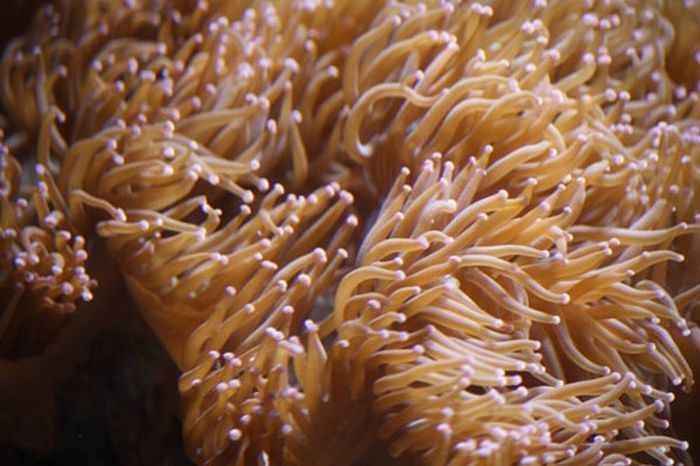|
|
Coral Organisms
|
Corals are marine organisms in class Anthozoa of phylum Cnidaria typically living in compact colonies of many identical individual "polyps." The group includes the important reef builders that inhabit tropical oceans, which secrete calcium carbonate to form a hard skeleton.
A coral "head," which appears to be a single organism, is a colony of myriad genetically identical polyps. Each polyp is typically only a few millimeters in diameter. Over many generations the colony secretes a skeleton that is characteristic of the species. Individual heads grow by asexual reproduction of individual polyps. Corals also breed sexually by spawning. Polyps of the same species release gametes simultaneously over a period of one to several nights around a full moon.
Although corals can catch small fish and animals such as plankton using stinging cells on their tentacles, most corals obtain the majority of their energy and nutrients from photosynthetic unicellular algae called zooxanthellae. Such corals require sunlight and grow in clear, shallow water, typically at depths shallower than 60 metres (200 ft). Corals can be major contributors to the physical structure of the coral reefs that develop in tropical and subtropical waters, such as the enormous Great Barrier Reef off the coast of Queensland, Australia. Other corals do not have associated algae and can live in much deeper water, with the cold-water genus Lophelia surviving as deep as 3,000 metres (9,800 ft). Examples live on the Darwin Mounds located north-west of Cape Wrath, Scotland. Corals have also been found off the coast of the U.S. in Washington state and the Aleutian Islands in Alaska.
|
|









